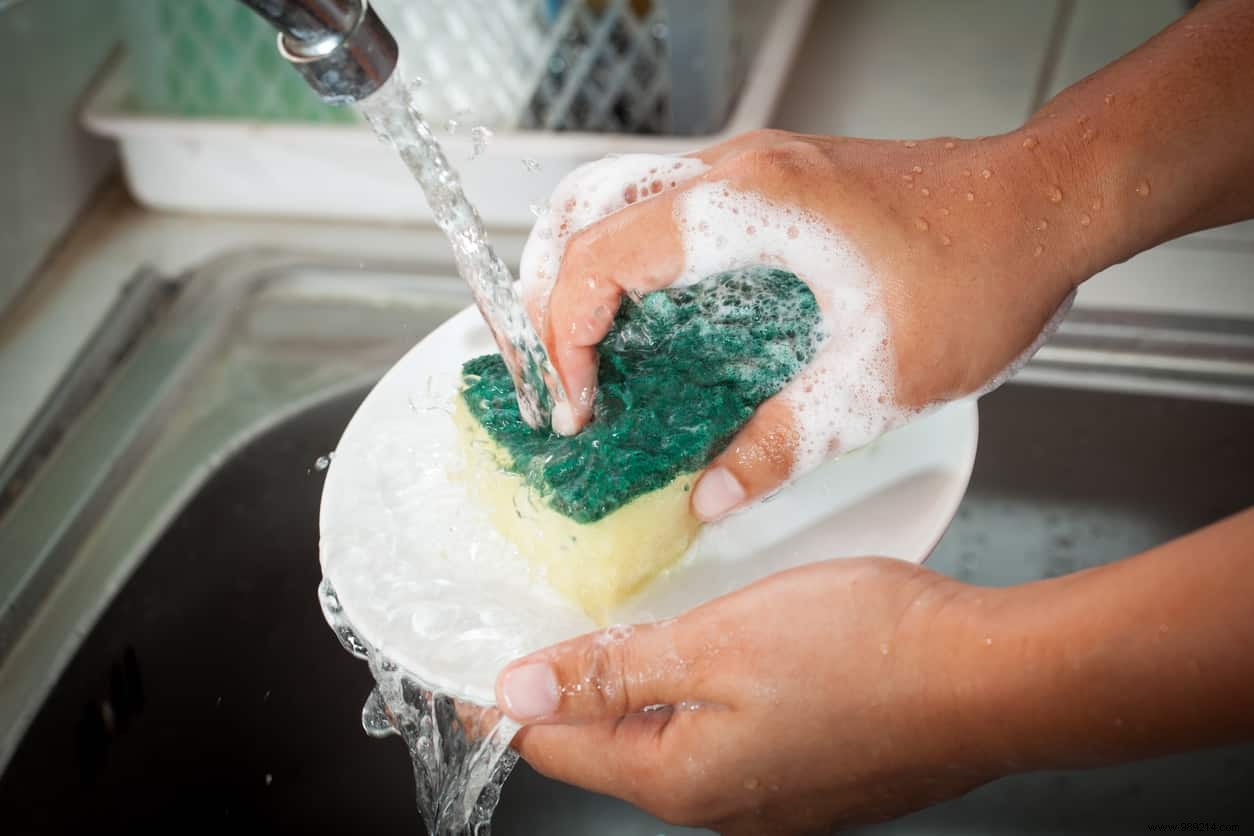Hard to believe and yet our kitchen sponges are more infested than our toilets. Indeed, billions of bacteria are present on this everyday utensil. A recent study tried to understand why sponges are so conducive to the development of these microbes. According to the researchers, the fault lies with the very structure of this object.
In 2017, microbiologists from Furtwangen University (Germany) carried out genetic sequencing of samples from more than a dozen kitchen sponges that had been used extensively . The results revealed the presence of no less than 362 different types of bacteria . While the vast majority of these bacteria are harmless, some of them are still considered potential pathogens. Examples include the famous Escherichia coli, Salmonella and Staphylococcus . In addition, remember that sponges contain up to 54 billion bacteria per cubic centimeter , more than the toilets. However, you should know that standard sponges have a total volume of 300 cubic centimeters.
Published on February 10, 2022 in the journal Nature Chemical Biology, a study from Duke University (USA) attempted to answer the following question:why do our sponges are they really breeding grounds for bacteria? In reality, the secret lies in the shape of the sponge or rather its structure.

According to scientists, the proliferation of bacteria is greatly facilitated by the presence of multiple holes and cavities . Sponges have many small tunnels where these organisms can grow in peace. Moreover, while some bacteria prefer this configuration, others prefer the smooth side of the sponge. Therefore, the latter offers two options of choice for germs.
When a sponge is used, most people buy a new one. However, it is also possible to carry out disinfection. The dishwasher option seems ideal, but a short turn in the machine at 60° also does the job. Another possibility is to put it in the microwave after soaking the sponge in water and vinegar.
Getting rid of germs without using household appliances is also doable. Thus, soaking the sponge in lemon and a little water or in rubbing alcohol or sodium percarbonate gives bacteria little chance. Nevertheless, all these methods should not prevent you from regularly replacing the sponges even if this gesture is obviously not really ecological.